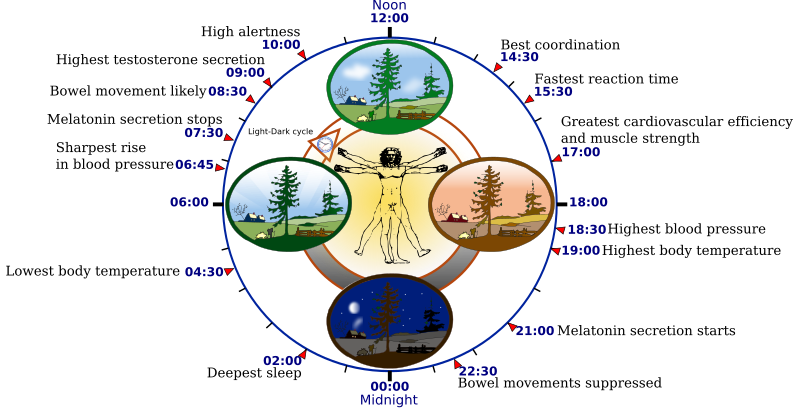

| Visitors Now: | |
| Total Visits: | |
| Total Stories: |

| Story Views | |
| Now: | |
| Last Hour: | |
| Last 24 Hours: | |
| Total: | |
Electricity Found In Biological Clock By NYU Researchers
Biologists from New York University have uncovered new ways our biological clock’s neurons use electrical activity to help keep behavioral rhythms in order. The findings, which appear in the journal Current Biology, also point to fresh directions for exploring sleep disorders and related afflictions.

Blau added that the findings may offer new pathways for exploring treatments to sleep disorders because the research highlights the parts of our biological clock that “may be particularly responsive to treatment or changes at different times of the day.”
The study’s other co-authors were: Dogukan Mizrak and Marc Ruben, doctoral students in NYU’s Department of Biology; Gabrielle Myers, an undergraduate in the Biology Department; Kahn Rhrissorrakrai, a post-doctoral researcher; and Kristin Gunsalus, an associate professor at NYU’s Center for Genomics and Systems Biology and NYU Abu Dhabi.
In a previous study, Blau and his colleagues found that rhythms in expression of a potassium channel (Ir) helps link the biological clock to the activity of pacemaker neurons. But Ir does not function as a simple output of the clock—it also feeds back to regulate the core clock. In the Current Biology research, the scientists sought to understand the nature of this feedback.
In exploring this mechanism, the researchers examined the biological, or circadian, clocks of Drosophila fruit flies, which are commonly used for research in this area. Earlier studies of “clock genes” in fruit flies allowed the identification of similarly functioning genes in humans.
By manipulating the neuronal activity of pacemaker neurons, the researchers showed that changes in the electrical activity of clock neurons produce major changes in the expression of circadian genes. With increased electrical activity in the evening, when clock neurons are normally fairly inactive, the researchers found that clock neurons have a circadian gene-expression profile more typically found in morning hours. In contrast, by diminishing electrical activity in the morning, gene expression was shifted to look more like it does in the evening. In other words, the electrical state of a clock neuron can dramatically affect circadian gene expression in clock neurons.
“What was striking about these results was the coordination between the firing of neurons and gene expression,” observed Blau. “This is one of the remarkable processes that helps keep clock neurons stay synchronized and run so accurately.”
To find the mechanism, Blau’s lab brought in the computational expertise of Gunsalus’ lab at NYU to identify regulatory DNA motifs in genes that respond to neuronal activity in clock neurons. One of these motifs binds the well-known set of factors that regulate gene expression in neurons involved in learning and memory.
“These data really make us focus on ‘the clock’ as a neuronal system rather than a set of genes,” noted Blau.
Contacts and sources:
James Devitt
New York University


